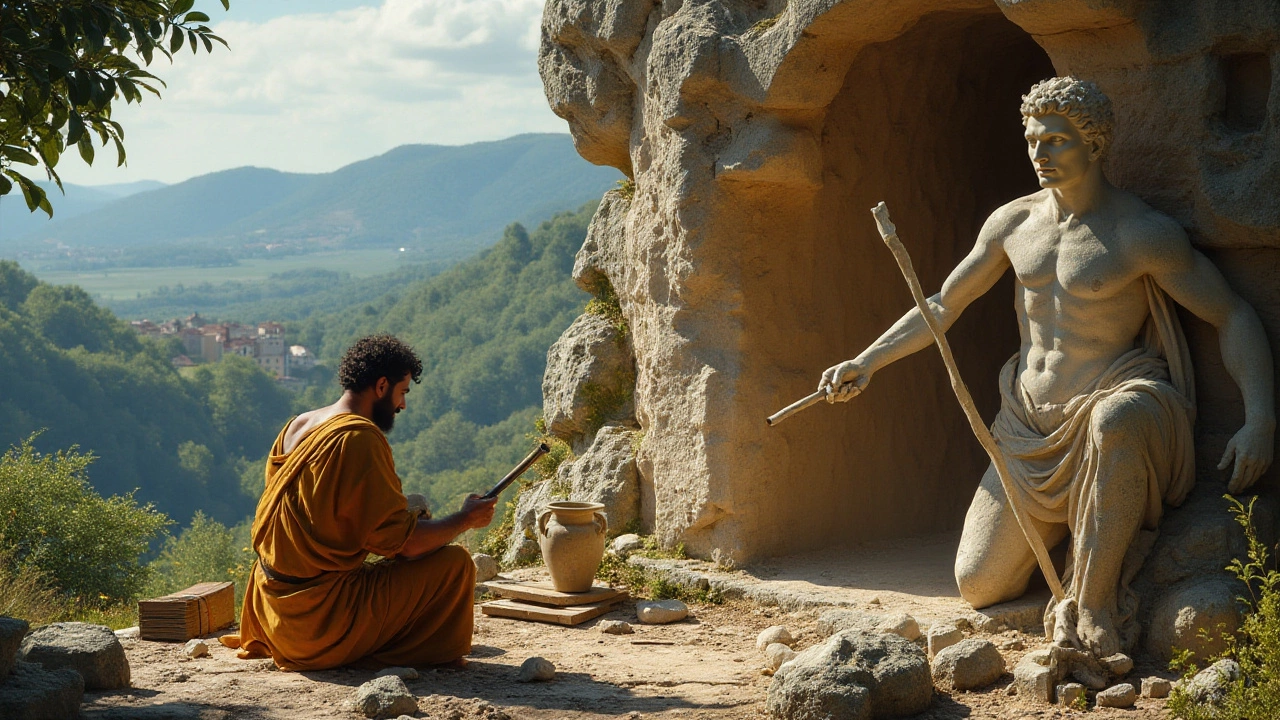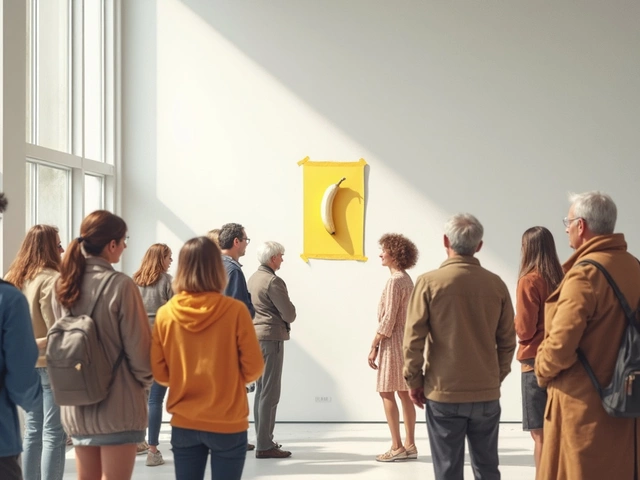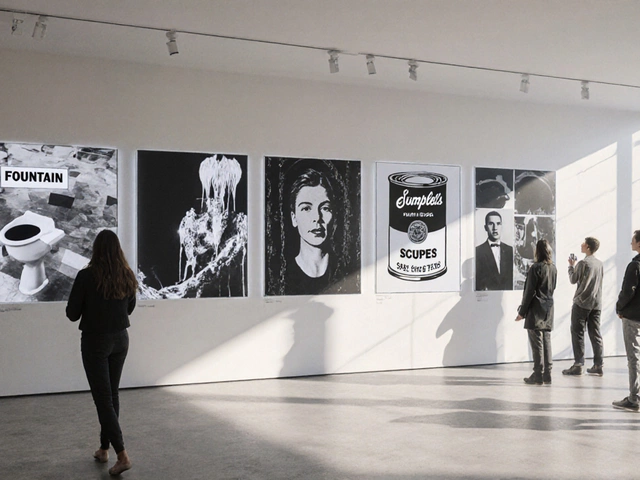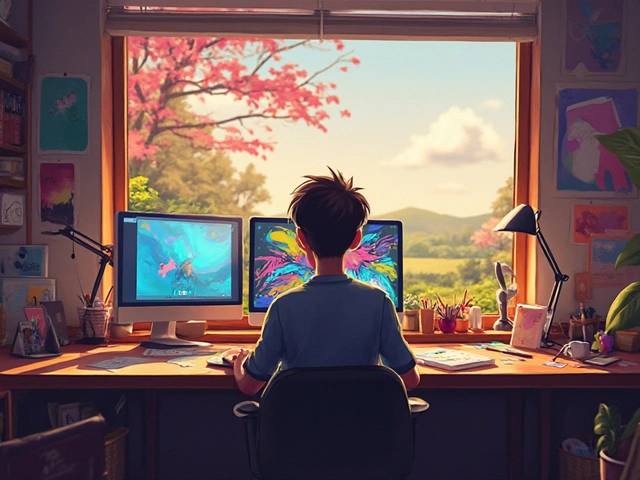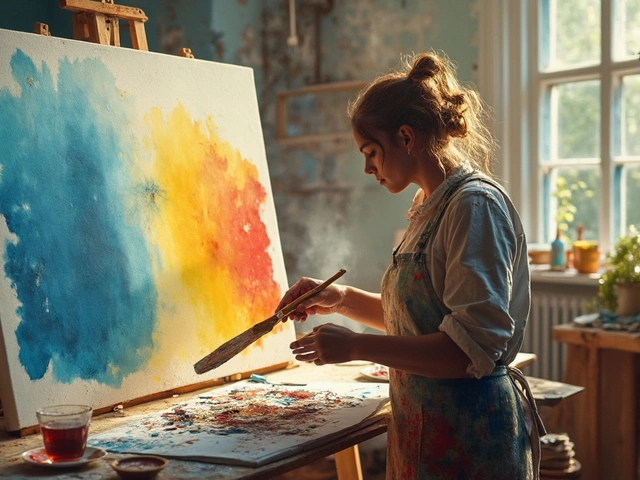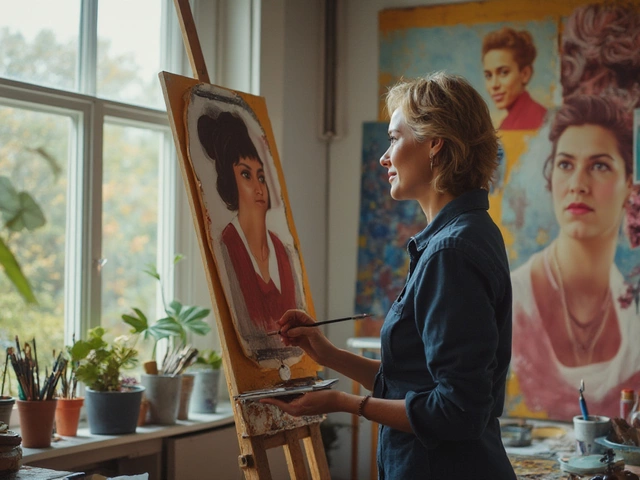Sculpture art, a captivating form of expression, explores the tactile wonder of transforming raw materials into tangible artistic creations. This medium unfolds an engaging narrative that spans millennia, each style telling a unique story shaped by the era and the hands that crafted it. Art enthusiasts and casual admirers alike find joy in the textures, shapes, and shadows cast by sculptural works.
Whether carved from stone, molded with clay, or constructed from metal, sculpture speaks to our senses and emotions directly. Unlike paintings, sculptures occupy our space, inviting us to walk around them, touch them, and sometimes even become part of them. The essence of sculpture art lies in its ability to render the intangible emotions of the artist into a physical, three-dimensional world.
- The Diverse History of Sculpture Art
- Classical Styles and Techniques
- The Influence of Cultural Movement
- Contemporary Trends and Innovations
- Materials and Methods
- How to Appreciate Sculpture Art
The Diverse History of Sculpture Art
Since time immemorial, the creative spark of humankind has manifested itself in the form of sculpture art. This medium of expression has accompanied societies from the use of rudimentary tools to the present day of avant-garde methods. Sculpture traces its roots back to the very origins of society, with some of the earliest examples being the prehistoric Venus figurines. These diminutive, yet fascinating, creations made from stone and ivory tell tales not just of fertility but of the innate human desire to make sense of the world around us through artistic means. The journey of sculpture art did not halt there; it paved its way through time, influencing and being influenced by myriad civilizations.
The resonance of sculpture echoed through ancient Egypt where it found its home in the colossal form of pyramids and legendary pharaoh statues. Egyptian artists were adept in imbibing the spiritual essence of their revered gods into stone, defying the clutches of time. Mesopotamia soon followed suite, where sculpture was often used not just for religious purposes but also in storytelling, adorning the walls of ancient temples and palaces with complex reliefs which spoke stories of gods, kings, and conquests. "It's as though each sculpture demands to be listened to, imploring us to unlock the age-old songs buried within," once penned a renowned art historian.
In ancient Greece, sculpture soared to unprecedented heights. No longer were sculptures just rough outlines of the human form; they now captured fluidity and grace through techniques that revealed musculature and motion, resulting in idealized figures that embodied both the strength and aesthetics prized by the culture. The Hellenistic period further honed this skill, bringing emotion and drama to life, as seen in masterpieces like the Winged Victory of Samothrace and the Laocoön Group. Romans later embraced Greek traditions, yet subtly incorporated their distinctive style, often depicting everyday individuals, granting posterity an encyclopedic glimpse of classical life.
The Renaissance, a flourishing period of art and culture, redefined sculpture. With celebrated artists like Michelangelo and Donatello, sculpture was reinvented to reach the pinnacle of human creative genius. Michelangelo’s David and Pietà are testaments to the era's unrivaled craftsmanship, capturing the delicate interplay between human anatomy and divine narrative. This era mirrored the renewed interest in classical ideals, lending sculptures an aura of rebirth akin to the cultural zeitgeist sweeping Europe during the 14th to 17th centuries.
As history forged ahead, sculpture continued to evolve, shedding traditional forms and embracing modernist sensibilities. The industrial age introduced an array of new materials, allowing for unprecedented innovation. Artists like Auguste Rodin broke with tradition, using fragmented forms and rough surfaces to invest sculptures with intense emotional texture, revolutionizing the medium. Alberto Giacometti and Henry Moore further reshaped modern sculpture by eschewing realism and experimenting with abstraction, distorting human figures to reflect internal states and the complexities of modern existence.
Today, sculpture art is more diverse than ever. Contemporary artists employ a vast array of materials—from the traditional marble and bronze to modern plastics and digital media. This diversity is reflected in the themes and forms explored, stretching the boundaries of human imagination. Installations and immersive environments redefine our understanding of space, blurring the lines between viewer and art object. The diverse history of sculpture is a saga of resilience, adaptation, and boundless creativity. As you embrace its enduring allure, remember, each piece has a story, a whispering echo of the time it was born.
Classical Styles and Techniques
The classical era of sculpture is a vast and intriguing realm, transporting us back to a time when artistry and craftsmanship were deeply intertwined with the cultural and spiritual life of civilizations. This period is broadly associated with the ancient Greeks and Romans, who are celebrated for their mastery in creating lifelike statues that captured the human form with astounding precision. The Greeks, particularly, are known for developing the concept of contrapposto, a technique which involves a figure standing with most of its weight on one foot, resulting in a slight twist of the torso that gives a sense of dynamism and relaxation. This innovation marked a significant shift from the rigid and frontal statuary of earlier times, profoundly influencing subsequent generations of artists.
Roman sculptors, on the other hand, were renowned for their portraits and busts that celebrated realism to a hyper-real degree. Unlike the Greek fascination with idealized forms, Roman art often relayed the natural imperfections and unique characteristics of their subjects, blending Greek idealism with their penchant for capturing verisimilitude. This blend saw the emergence of sculptures that kept the essence of their subjects alive, eternally. A famous example would be the bust of Emperor Augustus, where ambition and authority are etched meticulously onto the marble, eternalizing his legacy.
"Art is not what you see, but what you make others see," Edgar Degas once reflected, capturing the essence of these classical masterpieces that continue to speak to us across the ages.
These classical styles were not just about aesthetics; they often bore deep symbolic meanings or served as propagandist tools. Mythological representations were common, depicting gods and heroes carved from the hardest and most enduring of materials like marble and bronze. The craft of carving marble, in particular, required numerous steps—from roughing out the basic shape with a point chisel to the minute refinements achieved with patience and precision. This methodology established benchmarks in craftsmanship that have impacted techniques practiced even in modern sculpture art.
Moreover, the sculptures from the classical period were not just limited to the elite; they played a part in civic life. Statues adorned public spaces, temples, and marketplace; they even acted as tokens that marked significant events and observed the politics of the time. Often, they would carry inscriptions that told stories of conquests, declarations, or virtues—the visual rhetoric of the era. This deep interweaving of art and societal narratives speaks volumes about the culture that produced such extraordinary works. It's fascinating to think how many ancient methods and philosophies are still living in the heart of today’s sculpture art practice.
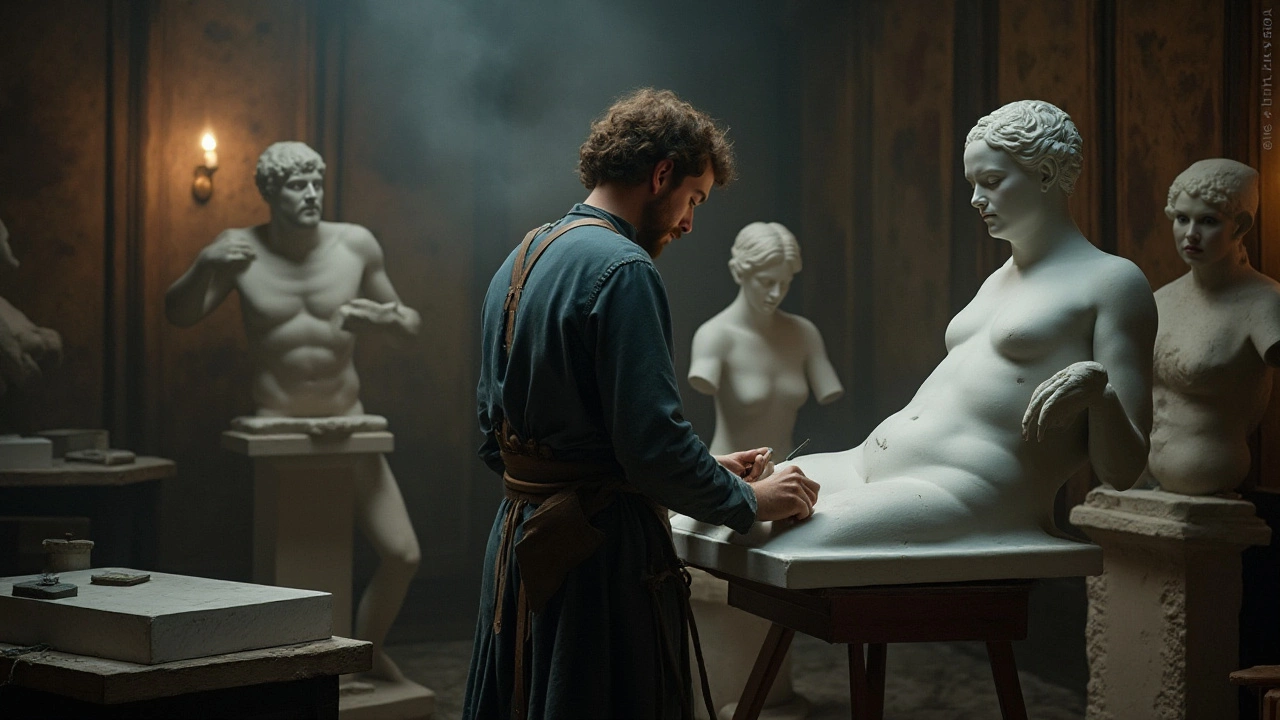
The Influence of Cultural Movement
The evolution of sculpture art has always been deeply intertwined with the cultural currents of its time. From ancient rituals to modern artistic explorations, each piece can be seen as a mirror reflecting the values, beliefs, and stories of the society that birthed it. The Renaissance period, for instance, was a significant era for sculpture. It marked a rebirth of classical ideals and techniques. Artists like Michelangelo and Donatello drew inspiration from ancient Roman and Greek sculptures, portraying human anatomy with unprecedented accuracy and dynamism. Sculptures of this time were not just about form but the embodiment of humanism and the exploration of man's place in the universe. This movement emphasized balance, proportion, and the beauty of the human body.
During the Baroque era, the cultural movement led to more dramatic and emotive works. Sculptures became theatrical, conveying intense emotion and a sense of motion through dynamic arrangements and intricate detailing. Bernini’s "Ecstasy of Saint Teresa" is a classic example, capturing a moment of spiritual awakening with exquisite craftsmanship that seems almost alive. Such works were not just decorative but spiritual and philosophical, shaped by the counter-reformation's emphasis on returning to faith's visceral roots. The 19th century ushered in Romanticism, encouraging artists to break free from past conventions and express personal emotions and nature themes. This was a time when sculptural art became more varied, revealing the diversity of human experience and the drama of nature captured in stone and metal.
"Art is not what you see, but what you make others see." – Edgar DegasAs we ventured into the 20th century, movements such as Cubism, Surrealism, and Abstract art further catapulted sculpture into new realms of expression. The traditional bounds of form, perspective, and subject matter were boldly challenged. Pablo Picasso and his cubist sculptures fragmented reality, presenting multiple perspectives at once. Surrealists like Salvador Dalí brought dreamscapes to life in three dimensions, while Abstract sculpture took inspiration from the intangible – emotions, sounds, and philosophies – transforming them into physical forms lacking explicit elements of reality. The political and social upheavals of the era left a notable imprint on the works, often serving as commentary on contemporary issues and the artist's inner turmoil.
In recent decades, contemporary trends have increasingly embraced globalization, technology, and environmental awareness. This reflects in the use of unconventional materials and techniques, with artists like Ai Weiwei challenging viewers to reflect on human rights and freedom through large-scale installations. Sculptural techniques have become as diverse as the globalized societies they come from, with digital fabrication, recycled materials, and site-specific installations becoming popular. Each cultural movement, from its inception to its decline, serves as a vital thread in the rich tapestry of sculpture art, constantly urging us to explore and reinterpret the human condition through forms that redefine reality as we perceive it.
Contemporary Trends and Innovations
The world of sculpture art in the 21st century is marked by a brave exploration of materials, techniques, and concepts. Artists are increasingly moving beyond the traditional confines of stone and metalwork, venturing into realms previously unimagined. This era welcomes mixed media, digital technology, and sustainable materials as vital elements in sculptural creation. The revolutionary use of 3D printing has democratized the process, offering artists precision tools to push their creative boundaries.
One notable trend is the integration of technology into sculptures. Artists now employ kinetic elements and sound to create multisensory experiences. For instance, sculptor Anthony Howe uses wind-driven elements to animate his installations, creating mesmerizing spectacles that defy static notions of art. These dynamic works capture the audience's imagination, inviting interaction on a level traditional sculpture might not.
Environmental consciousness too, is reshaping sculpture art. With growing awareness of sustainability, many sculptors have begun repurposing materials, creating works that comment on ecological issues or celebrate natural beauty. Anish Kapoor, known for his monumental yet minimalistic designs, often uses recycled or found materials, highlighting the relationship between art and its environmental footprint. His work challenges both aesthetic norms and inspires conversations about consumption and conservation.
Artistic styles in modern sculpture exhibit a renewed interest in storytelling and sociopolitical commentary. Artists like Ai Weiwei leverage sculpture to address pressing global concerns, raising awareness and sparking dialogue. His installations often critique governmental policies and human rights issues, using the medium of sculpture to bridge art and activism. Such works underscore the profound capacity of sculpture to evoke introspection and influence social change.
"Sculpture today is not what it was fifty years ago; it has become an endless field of potential, united by creativity but diversified by the tools and motifs of our time." - Antony Gormley
The intersection of technology and art is further exemplified by artists who incorporate augmented reality (AR) and virtual reality (VR) into their sculpture practice. These technologies allow audiences to engage more deeply, offering layered experiences that can transform depending upon the viewer's perspective. Such innovations expand the horizons of what sculptural techniques can achieve, ushering in a new era where art and audience interact fluidly across dimensions.
The surge in public art installations is another intriguing development. Cities worldwide are commissioning large-scale sculptures to enhance urban landscapes and foster community. Not only do these works beautify public spaces, but they also serve as cultural landmarks, promoting civic pride and cultural dialogue. Initiatives like The Fourth Plinth Project in Trafalgar Square exhibit the changing narrative of public sculpture—no longer just decorative, but culturally and socially significant.
As contemporary trends continue to evolve, the boundaries of modern sculpture are constantly being redefined, pushing the envelope on what we perceive as possible within the realm of three-dimensional art. Whether through the incorporation of cutting-edge technology, sustainability, or narrative power, modern sculptors are charting a dynamic and inclusive course for this timeless art form that continues to inspire and engage across generations and cultures.
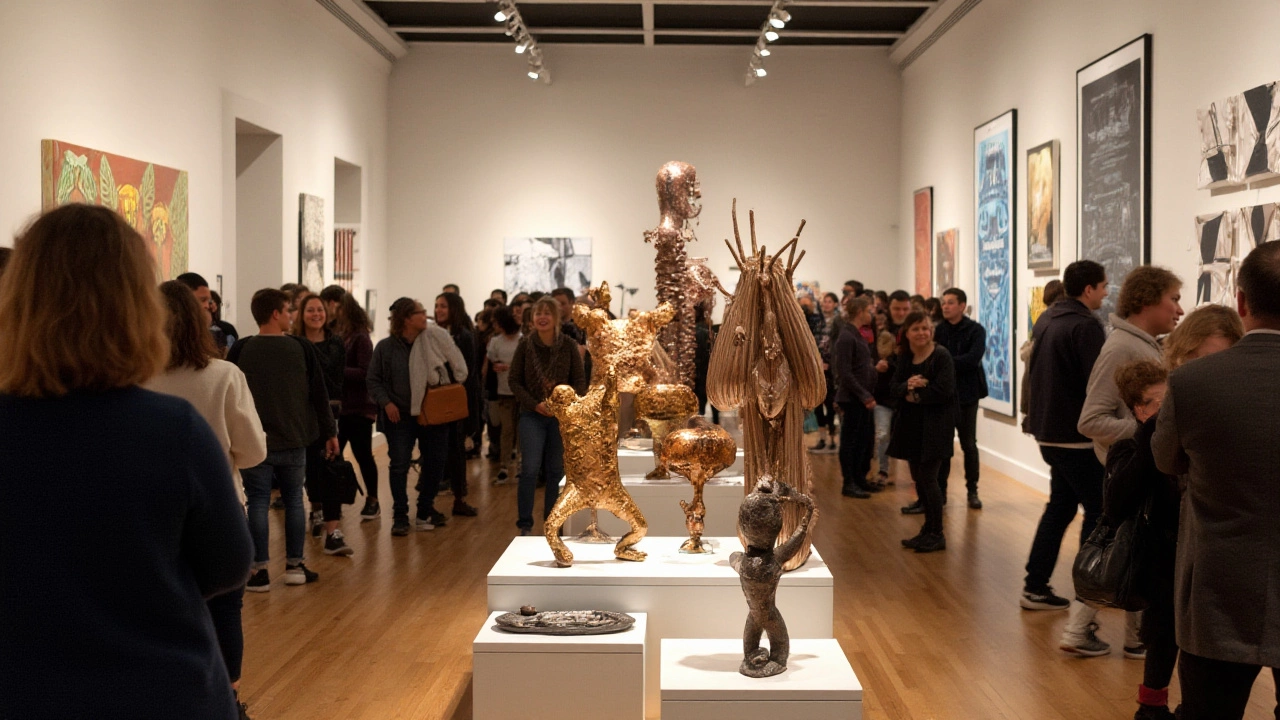
Materials and Methods
Sculpture art, visible and tangible, owes much of its allure to the diverse materials and methods used to craft each piece. Artists across time have experimented with different mediums, each offering a unique texture, weight, and resilience that enhances the artistic narrative. Historically, many sculptures have endured for centuries because they were carved from hardy materials like marble and granite, which speak of strength and timelessness. Marble, favored by ancient Greek and Roman sculptors, was chosen for its radiance and fine grain, allowing for exquisite detail in human figures. The Renaissance breathed new life into these traditions as masters like Michelangelo demonstrated the sublime art of shaping human form from a single block of this luminescent stone.
Wood, another classic choice, tells stories of intricate craftsmanship. Each grain and knot in the wood can be utilized to add texture and realism or to highlight nature's unpredictable beauty. While wood is susceptible to the ravages of time and climate, its accessibility and ease of manipulation have made it a favorite among sculptors worldwide. In Africa, Asia, and Indigenous cultures, wood carving traditions not only preserved history but also served ceremonial and spiritual purposes, demonstrating the intersection of artistry and culture.
As technology advanced, so too did the techniques and materials available to artists. The industrial era introduced metals such as bronze—known for its tensile strength—and later steel, which liberated sculptors to explore larger, more ambitious works. The modern era buzzes with an unprecedented variety of materials—from industrial Plastics and resins to unconventional choices like ice and even light itself in the form of lasers. These contemporary choices reflect the artists' desire to push boundaries and engage directly with themes relevant to today's audience. Modern sculpture boasts installations that seemingly defy gravity or burst with vibrant color, capturing the eye and imagination.
There is a method to the madness of creating a sculpture, with each material demanding specific techniques. While traditional carving and chiseling persist, new methodologies such as welding, 3D printing, and mixed media approaches have gained traction. Welding allows for the fusion of metals into complex, dynamic forms—some abstract, some more representational. Artistic styles have expanded exponentially with such technological advancements, permitting artists to realize visions that were once deemed impossible.
"Working with a new medium often pushes the evolution of the art itself," says renowned sculptor Richard Serra, whose monumental steel works alter landscapes and perceptions alike.
For those eager to explore sculpture art as a hobby or profession, starting with clay is generally recommended. It offers a forgiving nature, allowing one to mold, adapt, and even start fresh with minimal loss. The satisfaction of forming shapes directly with the hands closely mirrors ancient techniques while using modern-day conveniences like kilns to achieve permanence. No matter the medium, the heart of sculpture art lies in its tactile creation process, inviting the sculptor to explore, experiment, and express through touch—a universal language transcending time and geography.
How to Appreciate Sculpture Art
Appreciating sculpture art begins with engaging all your senses to truly experience the depth and intricacy of the work before you. Unlike two-dimensional art forms, sculptures demand a physical interaction with their surroundings and with you, the viewer. Start by approaching the sculpture from various angles. Notice how the play of light and shadow alters your perception of its form and texture. Walk around the piece and take the time to observe the details that are often missed at first glance.
Consider the material used by the artist. The substance's choice plays a critical role in conveying the message and emotion of the piece. For instance, the cold, smooth surface of marble can evoke feelings of timeless elegance and permanence, while the rough, rugged edges of iron might suggest industrial might and resilience. Pay attention to the sculptor's technique—whether it's the delicate chiseling of stone or the bold welding of metal, each technique gives life to the sculptural expression in a unique way.
Take time to reflect on the subject matter and the context of the sculpture. Ask yourself: What is being represented? Is it a figure from mythology, a depiction of a historical event, or an abstract concept? Understanding the intent behind a sculpture often requires exploring the cultural or historical backdrop of its creation. Why did the artist choose this particular form or style at that moment in time? This exploration can open up new perspectives and deepen your appreciation of the art form.
Anselm Kiefer, a renowned sculptor, once stated, "Art is difficult, it's not entertainment." This quote speaks to the complex nature of sculptural works and their power to evoke thought, stir emotions, and even challenge societal norms.Consider how modern technology has influenced contemporary sculpture. From 3D printing to digital modeling, artists today have access to tools that were unimaginable in traditional sculptural methods. These innovations allow for an unprecedented exploration of form and function. When you come across a modern piece, think about how these tools may have contributed to its creation, transforming the very idea of what a sculpture can be.
When visiting a sculpture gallery or an outdoor installation, immerse yourself in the environment. Notice how the artwork interacts with its surroundings—whether it’s nature or an urban landscape—and how those elements can alter the interpretation of the piece. Modern sculpture often aims to break boundaries, not only in materials but also in space. It invites you to reflect on the relationship between the sculpture and the setting.
To further your understanding, consider discussing your interpretations with others or participating in guided tours and workshops that focus on sculpture. Engaging in conversation about your impressions can enrich your understanding and appreciation. Remember, appreciating sculpture is not only about understanding the technical and historical contexts. It's also about connecting with the emotions and ideas that the work inspires within you.
